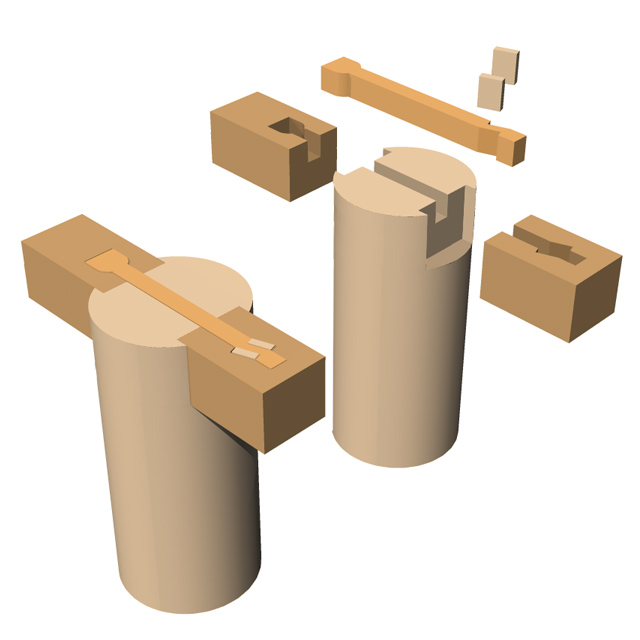|
||
 |
||

(C)2001 Japanese Architecture and Art Net Users System. No reproduction or republication without written permission.
掲載のテキスト・写真・イラストなど、全てのコンテンツの無断複製・転載を禁じます。
|
||||||
| saobiki dokko 竿引独鈷 | ||||||
| KEY WORD : architecture / joints | ||||||
| A long, lapped, rod-type tenon cut in the end of a rainbow beam *kouryou 虹梁, or the head of a penetrating tie beam *kashiranuki 頭貫. The joint is extended so that it connects two separate members *sao 竿. It acts, in this case, like a spline, but is not one. The lapped part of the tenon is about half the height of the beam; a relatively shallow part of the beam itself is designated for insertion into a circular pillar and the mortise is shaped accordingly. The lapped part of the joint reaches the exact center of the pillar. The rod continues approximately two-thirds of its length into the nosing *kibana 木鼻. The rear part of the nosing is inserted a short distance into the pillar. The nosing is mortised to receive the end of the long rod of the tenon. Diagonal cuts in a half-staggered position are made to receive tapered keys *shachi 車知 that are inserted to prevent slipping. This type of joinery is common in temple and shrine architecture. | ||||||
 |
||||||
| REFERENCES: | ||||||
| *saoshachitsugi 竿車知継 | ||||||
| EXTERNAL LINKS: | ||||||
| NOTES: | ||||||
(C)2001 Japanese Architecture and Art Net Users System. No reproduction or republication without written permission. 掲載のテキスト・写真・イラストなど、全てのコンテンツの無断複製・転載を禁じます。 |
||||||